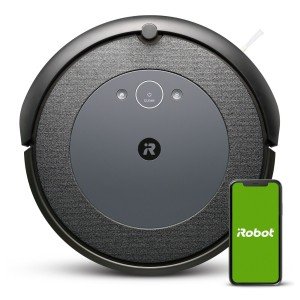Robotic Hoovers: Revolutionizing Home Cleaning
In the busy world we live in, where time is of the essence, family tasks frequently take a rear seat. Amongst Going On this site in domestic innovation are robotic hoovers, or robotic vacuum cleaners. These intelligent devices have actually transformed the method individuals approach cleaning their homes, enabling for performance and convenience that conventional vacuuming can not match. This article looks into the functions, advantages, and future of robotic hoovers, along with dealing with typical inquiries about their functionality and maintenance.
What Are Robotic Hoovers?
Robotic hoovers are automated vacuum cleaners designed to browse through spaces and tidy floorings without human intervention. They use numerous innovations, including sensing units, cameras, and artificial intelligence, to detect dirt and navigate barriers, making them an important addition to modern households.
Secret Features of Robotic Hoovers
Smart Navigation: Most robotic vacuums are equipped with innovative sensory technology that allows them to map and browse areas effectively. This consists of:
- Lidar Sensors: To create a map of the home.
- Infrared Sensors: To avoid challenges and drops (like stairs).
- Cliff Sensors: Prevents the unit from falling off edges.
- Automated Scheduling: Many robotic hoovers can be programmed to clean at particular times, making the most of convenience for users.
- Self-Charging: Most models go back to their docking stations when their battery is low, guaranteeing they are always charged and ready to clean.
- App Connectivity: Modern robotic vacuums often include apps that allow users to manage their gadgets remotely, set schedules, and even see cleaning maps.
- Multiple Cleaning Modes: Options such as area cleaning, edge cleaning, and arranged cleaning permit customized cleaning regimens based on the home needs.
Benefits of Robotic Hoovers
- Time-Saving: Robotic hoovers can run individually, releasing up important time for house owners to focus on other tasks.
- Consistency: They supply consistent cleaning performance and keep floor tidiness without the disparity that sometimes comes with manual vacuuming.
- Accessibility: With their compact design, robotic hoovers can easily reach under furniture and into tight spaces where standard vacuums battle.
- Upkeep of Various Floor Types: Many robotic vacuum cleaners can adapt to various surface areas, including carpets, hardwood, tile, and more.
- Integration with Smart Home Systems: They can be connected to smart home gadgets, permitting users to integrate them into their home automation systems.
Comparison of Popular Robotic Hoovers
Here's a brief comparison of some popular models in the market:
| Model | Smart Navigation | App Connectivity | Battery Life | Price Range |
|---|---|---|---|---|
| iRobot Roomba 675 | Yes | Yes | 90 minutes | ₤ 250 - ₤ 300 |
| Neato Botvac D7 | Yes | Yes | 120 minutes | ₤ 600 - ₤ 700 |
| Eufy RoboVac 11S | Yes | Restricted | 100 minutes | ₤ 200 - ₤ 250 |
| Roborock S6 | Yes | Yes | 150 minutes | ₤ 500 - ₤ 600 |
| Shark ION Robot | Yes | Yes | 120 minutes | ₤ 250 - ₤ 350 |
Maintenance and Care for Robotic Hoovers
Regardless of their automated functions, robotic hoovers need routine maintenance to ensure their ideal efficiency. Here are some suggestions for preserving a robotic vacuum:
- Empty the Dustbin Frequently: Regular clearing helps keep suction power.
- Clean the Brushes: Hair and debris can obstruct brushes; routine cleaning prevents this.
- Inspect the Filters: Dirty filters can hamper efficiency; they ought to be cleaned or replaced as specified by the manufacturer.
- Check Wheels and Sensors: Ensuring that the wheels are without challenges and sensing units are clean will improve navigation and performance.
- Update the Firmware: Keeping the robotic vacuum's software up-to-date can solve bugs and enhance functionality.
Future of Robotic Hoovers
As technology continues to develop, the potential for improvements in robotic vacuums is huge. Developments on the horizon may consist of:
- Improved AI Capabilities: Enhanced discovering algorithms may allow robotic hoovers to much better understand homes and cleaning needs.
- Integration with More Smart Home Devices: Future designs might end up being a lot more integrated with home automation systems, boosting usability.
- Advanced Cleaning Features: Innovations like mopping capabilities and deeper carpet cleaning performance could expand their utility.
- Sustainability Features: Future designs may integrate environmentally friendly innovations, such as solar charging or recyclable products.
Regularly Asked Questions (FAQs)
How much do robotic hoovers usually cost?
- Prices for robotic hoovers vary considerably depending on features, but normally range from ₤ 200 to ₤ 800.
How loud are robotic hoovers?
- Many robotic vacuums operate at a noise level between 50 to 70 decibels, which is quieter than standard vacuums.
Can robotic vacuums manage pet hair?
- Yes, lots of robotic hoovers are created specifically with effective suction and brushes to manage pet hair effectively.
Do robotic vacuums work on carpets?
- Definitely. Most robotic vacuums can clean up different types of surfaces consisting of carpets, wood, and tiles.
Do I need to configure my robotic vacuum?
- While you can set schedules and preferences through an app, numerous designs can also operate on demand or instantly once charged.
In conclusion, robotic hoovers represent an amazing leap in home cleaning technology, using impressive convenience and performance that attract modern-day house owners. As innovation continues to advance, these devices promise even much better cleaning abilities, even more improving home hygiene and maintenance. For automatic cleaning robot looking to streamline their cleaning regimens, purchasing a robotic hoover can be an exceptionally rewarding choice.

